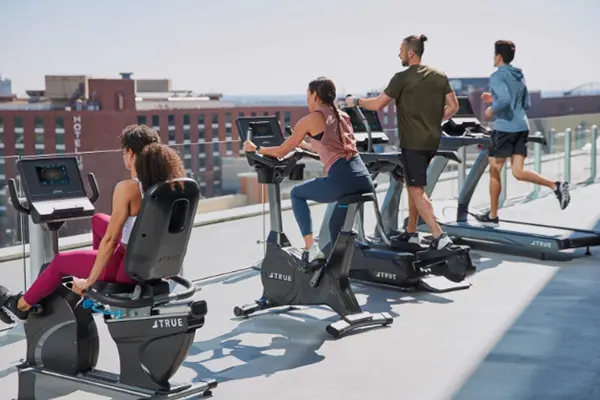Cardio equipment is a valuable investment for anyone looking to improve their cardiovascular health, lose weight, or enhance overall fitness. With a wide variety of options available, choosing the right cardio equipment can be overwhelming. This guide will help you understand the key factors to consider when purchasing cardio equipment to ensure you make an informed decision that suits your fitness goals, budget, and space.
1. Understand Your Fitness Goals
Before purchasing any cardio equipment, it’s essential to clarify your fitness goals. Are you looking to lose weight, improve cardiovascular endurance, or train for a specific sport? Different machines offer unique benefits, so understanding your objectives will help narrow down your choices. For instance, treadmills are excellent for running and walking, which can enhance endurance and burn calories. In contrast, elliptical machines provide a low-impact workout that is gentler on the joints, making them ideal for those with knee or hip issues.
2. Consider Your Space
The space available in your home will significantly impact your choice of cardio equipment. Some machines, like treadmills and rowing machines, require more room due to their size and range of motion. Measure the area where you plan to place the equipment, accounting for extra space around it for safe use. Additionally, consider equipment that can be folded or easily stored if space is limited. Compact options, like foldable treadmills or mini steppers, might be more suitable for small apartments or homes.
3. Set a Budget
Cardio equipment can range from affordable to highly expensive, depending on the brand, features, and quality. Setting a budget before shopping is crucial to prevent overspending. While it might be tempting to purchase the latest high-tech treadmill or elliptical, consider what features are genuinely necessary for your workouts. Often, mid-range equipment provides the perfect balance of quality and affordability. Remember to factor in additional costs, such as delivery fees, assembly, and maintenance.
4. Research Different Types of Equipment
There are several types of cardio equipment available, each offering unique benefits:
- Treadmills: Ideal for walking, jogging, and running. They provide a versatile workout and often come with features like adjustable inclines, speed settings, and pre-programmed workouts.
- Ellipticals: Provide a low-impact workout, combining the motions of walking, running, and stair climbing. They are excellent for full-body workouts and are easier on the joints.
- Stationary Bikes: Great for those who prefer cycling or have lower body joint concerns. They come in various forms, such as upright, recumbent, and spin bikes.
- Rowing Machines: Offer a full-body workout by engaging both the upper and lower body. They are effective for building strength and endurance.
- Stair Climbers and Steppers: Focus on lower body strength and cardiovascular fitness. They simulate climbing stairs and are compact, making them ideal for smaller spaces.
5. Evaluate Features and Specifications
When comparing different models, pay attention to features and specifications that align with your fitness needs. Important aspects to consider include:
- Durability and Build Quality: Look for sturdy construction, especially if you plan to use the equipment frequently or have multiple users.
- Console and Display: A user-friendly console with clear displays for time, speed, distance, and calories burned can enhance your workout experience. Some models also offer heart rate monitoring, built-in speakers, and app connectivity.
- Resistance Levels: Adjustable resistance is crucial for tailoring workouts to your fitness level. Ensure the equipment offers enough levels to accommodate your progress.
- Safety Features: For machines like treadmills, safety features such as an emergency stop button or auto shut-off can prevent accidents.
6. Test Before You Buy
If possible, try out the equipment in person before purchasing it. Many fitness stores have demo models available for customers to test. This allows you to get a feel for the machine’s comfort, ease of use, and overall quality. Pay attention to the noise level, smoothness of motion, and stability. If buying online, check the return policy in case the equipment doesn’t meet your expectations.
7. Read Reviews and Seek Recommendations
Customer reviews can provide valuable insights into the equipment’s performance and durability. Look for reviews that mention both the pros and cons to get a balanced perspective. Additionally, seek recommendations from friends, family, or fitness professionals who have experience with different types of cardio equipment.
8. Consider Maintenance and Warranty
Lastly, consider the maintenance requirements and warranty offered by the manufacturer. Regular maintenance, such as lubricating a treadmill belt or checking an elliptical’s resistance system, can prolong the life of your equipment. A good warranty provides peace of mind and protection against defects or malfunctions.
Conclusion
Buying cardio equipment is a significant investment in your health and fitness. By understanding your goals, evaluating your space and budget, researching different types of equipment, and considering important features, you can make an informed decision that best suits your needs. Happy exercising!
Post time: 08-26-2024




